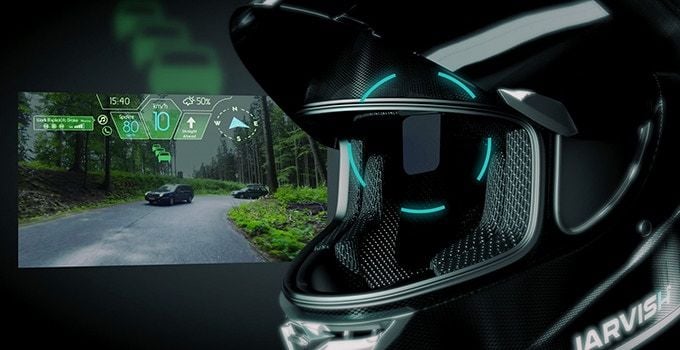In an era where technology is seamlessly integrated into our daily lives, even essential safety gear like helmets has undergone a revolutionary transformation. Smart helmets, which merge advanced technology with traditional safety features, are changing the way we approach road safety. These innovative devices are not just about protecting your head; they also enhance situational awareness, improve communication, and provide invaluable data. In this article, we explore how smart helmets are redefining safety and convenience for riders worldwide.
The Evolution of Helmets: From Basic Protection to Smart Devices
Helmets have always been synonymous with safety, but for decades their design focused purely on impact protection. Traditional helmets, while effective in safeguarding against head injuries, offered little else. With the rapid advancement of wearable technology, however, helmets have become much more than protective gear. Smart helmets integrate cutting-edge technologies like sensors, Bluetooth connectivity, cameras, and augmented reality to create a multi-functional device that enhances safety and usability.
Key Features of Smart Helmets
Smart helmets come packed with features designed to provide maximum protection and convenience. Here are some of the most notable advancements:
1. Integrated Communication Systems
Bluetooth-enabled smart helmets allow riders to stay connected while keeping their hands on the handlebars. Features include:
- Hands-free Calling: Make and receive calls without taking your eyes off the road.
- Intercom Systems: Communicate with fellow riders in a group, perfect for long-distance trips.
- Music and Navigation: Stream music or receive turn-by-turn navigation instructions directly through built-in speakers.

2. Built-in Cameras
Many smart helmets come equipped with front and rear cameras that:
- Record Rides: Capture your journey for safety or leisure purposes.
- Enhance Visibility: Rear cameras can act as digital mirrors, displaying a live feed of what’s behind you.
- Provide Evidence: Video recordings can serve as critical evidence in case of accidents.
3. Safety Sensors and Alerts
Smart helmets use sensors to monitor a rider’s surroundings and alert them to potential dangers. Features include:
- Collision Warnings: Detect vehicles in blind spots and warn riders of impending collisions.
- Fall Detection: Identify falls or crashes and automatically notify emergency contacts.
- Heart Rate Monitoring: Track vital signs to ensure the rider’s health and fitness.
4. Augmented Reality (AR) Displays
AR-enabled smart helmets provide a heads-up display (HUD) that overlays essential information directly in the rider’s line of sight, such as:
- Speed and navigation.
- Weather updates.
- Traffic conditions. This minimizes the need for riders to look down at their phones or dashboards, enhancing focus and safety.
5. Voice Assistance
Smart helmets often integrate voice-activated assistants like Siri, Google Assistant, or proprietary AI systems. Riders can issue commands for navigation, music control, or calling without lifting a finger.
6. Battery and Power Management
With all these advanced features, smart helmets come with rechargeable batteries designed for extended use. Many models also offer energy-efficient modes to conserve power during long rides.
Benefits of Smart Helmets
The integration of technology into helmets provides a host of benefits, making them an attractive choice for modern riders. Key advantages include:
Enhanced Safety
From collision warnings to fall detection, smart helmets take proactive measures to protect riders. Real-time alerts and monitoring systems minimize risks on the road.
Improved Convenience
Hands-free communication, built-in navigation, and AR displays make riding more enjoyable and hassle-free, allowing riders to focus on the journey.
Data and Analytics
Many smart helmets connect to smartphone apps that provide detailed insights into ride performance, distance covered, and even health metrics. This data helps riders improve their habits and ensure a safer ride.
Entertainment on the Go
Listening to music or podcasts without compromising safety adds a layer of enjoyment to commutes or road trips.
Emergency Assistance
In the event of an accident, smart helmets can alert emergency services or designated contacts, potentially saving lives in critical situations.
Popular Smart Helmet Models in 2024
The market is brimming with innovative smart helmets, each catering to different needs and budgets. Here are some of the top models:
1. Sena Momentum Pro
- Features: Built-in 4K camera, Bluetooth intercom, and advanced noise control.
- Best For: Motorcyclists who prioritize communication and video recording.

2. Forcite MK1S
- Features: AR HUD, crash detection, and navigation.
- Best For: Riders looking for a sleek design and cutting-edge AR features.
3. Livall BH60SE Neo
- Features: Fall detection, SOS alerts, and smart lighting.
- Best For: Cyclists seeking a lightweight, multi-functional helmet.
4. CrossHelmet X1
- Features: 360-degree camera, HUD, and noise cancellation.
- Best For: Tech-savvy riders who value comprehensive safety and comfort.
Challenges and Considerations
Despite their numerous advantages, smart helmets are not without challenges. Riders should be aware of the following:
Cost
Smart helmets are significantly more expensive than traditional models, often ranging from $200 to over $1,000. However, the investment is justified by the added safety and convenience features.
Battery Life
With multiple electronic components, battery life can be a concern. Riders should ensure their helmets are fully charged before long trips.
Distractions
While smart helmets aim to enhance safety, excessive notifications or features could potentially distract riders. Choosing a helmet with customizable settings can help mitigate this.
Compatibility
Not all smart helmets are compatible with every device or app. Riders should check compatibility with their smartphones or other gadgets before purchasing.
The Future of Smart Helmets
The future of smart helmets is incredibly promising, with ongoing advancements expected to revolutionize road safety further. Here are some trends to watch:
- Artificial Intelligence: AI-powered helmets could provide predictive analytics, warning riders of potential risks based on real-time data.
- 5G Connectivity: Faster and more reliable connectivity will enhance features like live streaming and cloud-based data storage.
- Eco-Friendly Designs: Manufacturers are exploring sustainable materials and energy-efficient components to reduce environmental impact.
- Customizable Features: Future helmets may allow riders to tailor functionalities to their specific needs, creating a more personalized experience.

Conclusion
Smart helmets represent a groundbreaking leap in road safety, combining advanced technology with practical design to create a safer and more enjoyable riding experience. Whether you’re a motorcyclist, cyclist, or e-scooter enthusiast, investing in a smart helmet is a step toward prioritizing your safety and embracing the future of riding gear. As innovation continues, these helmets are poised to become an indispensable part of every rider’s journey.


